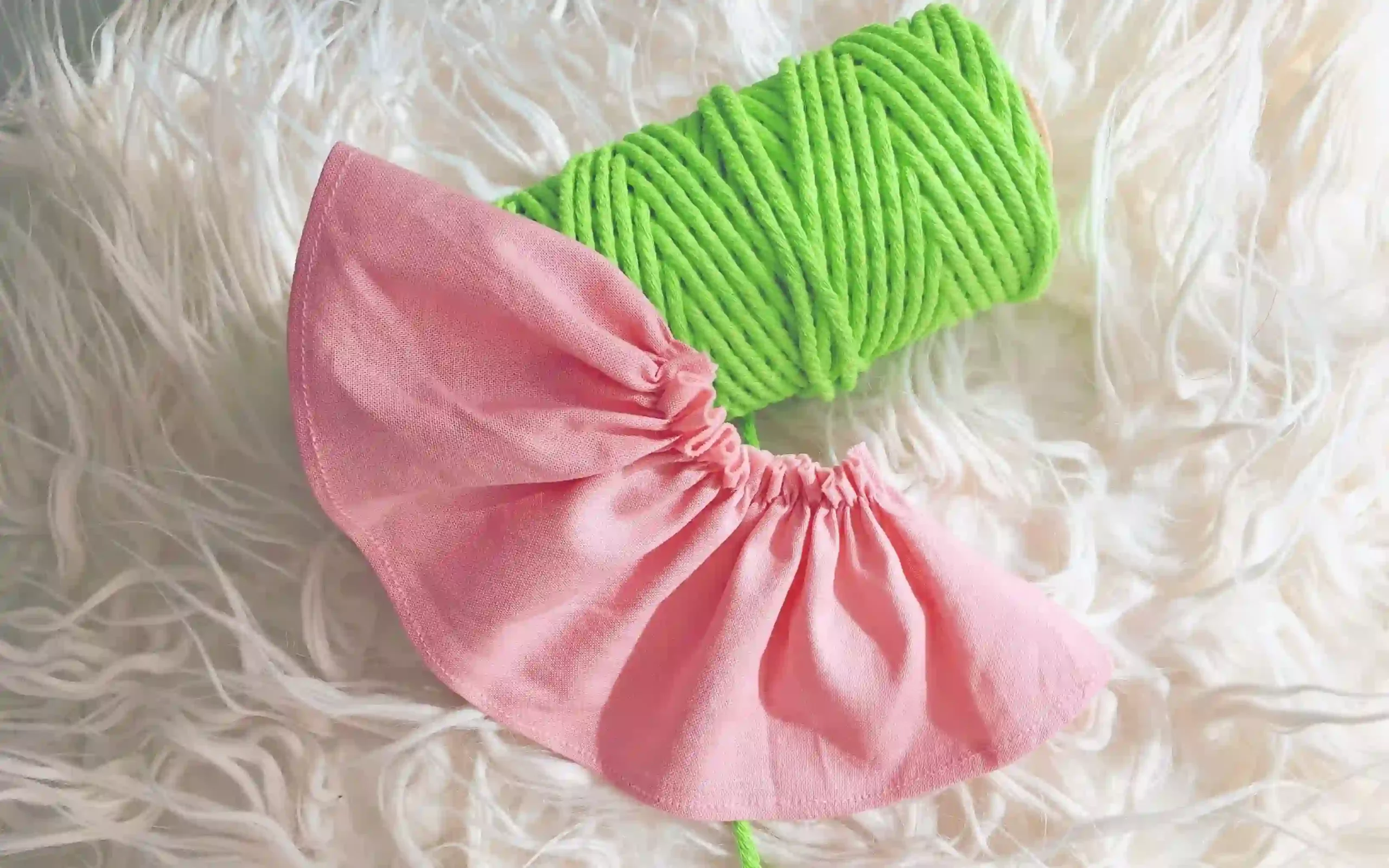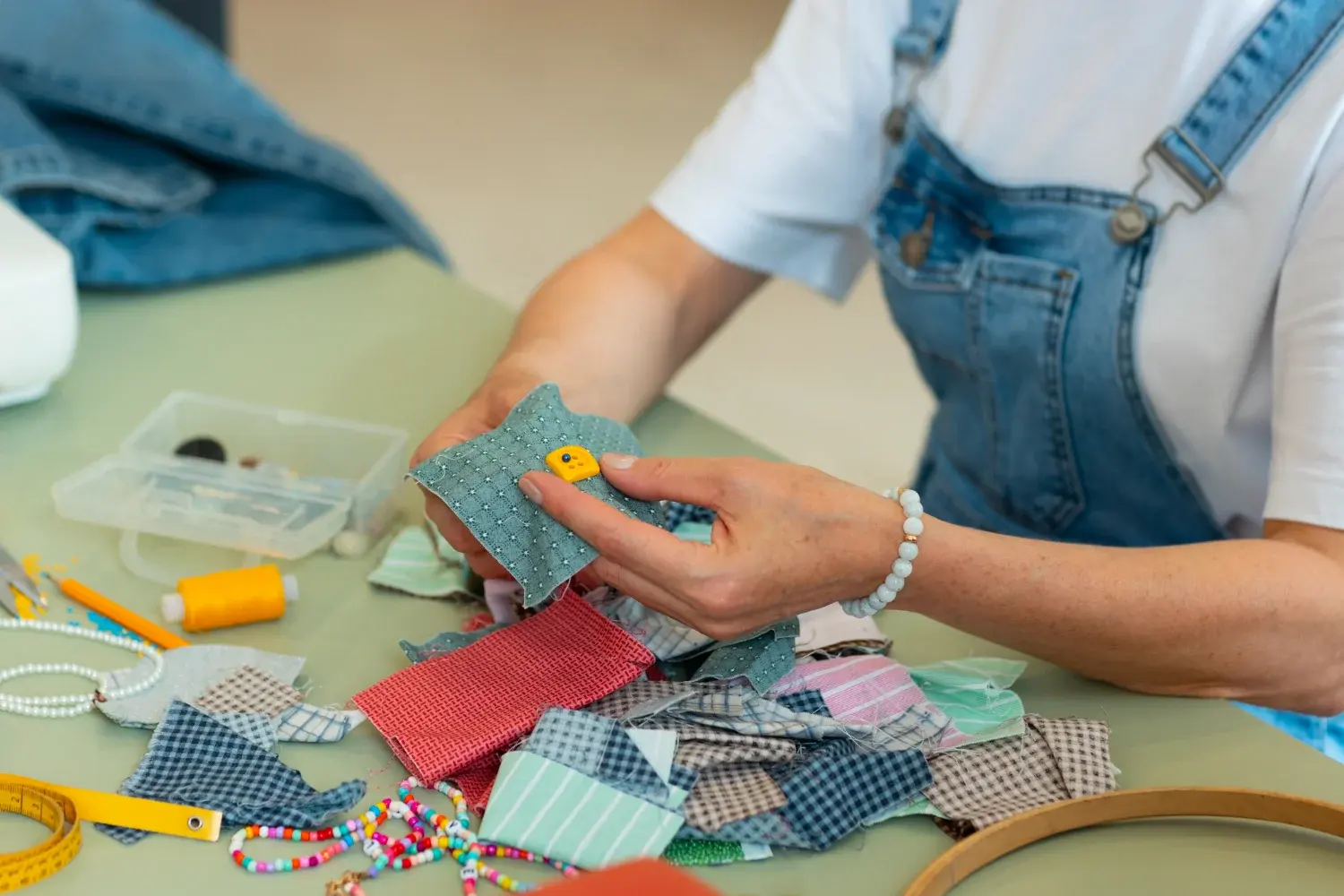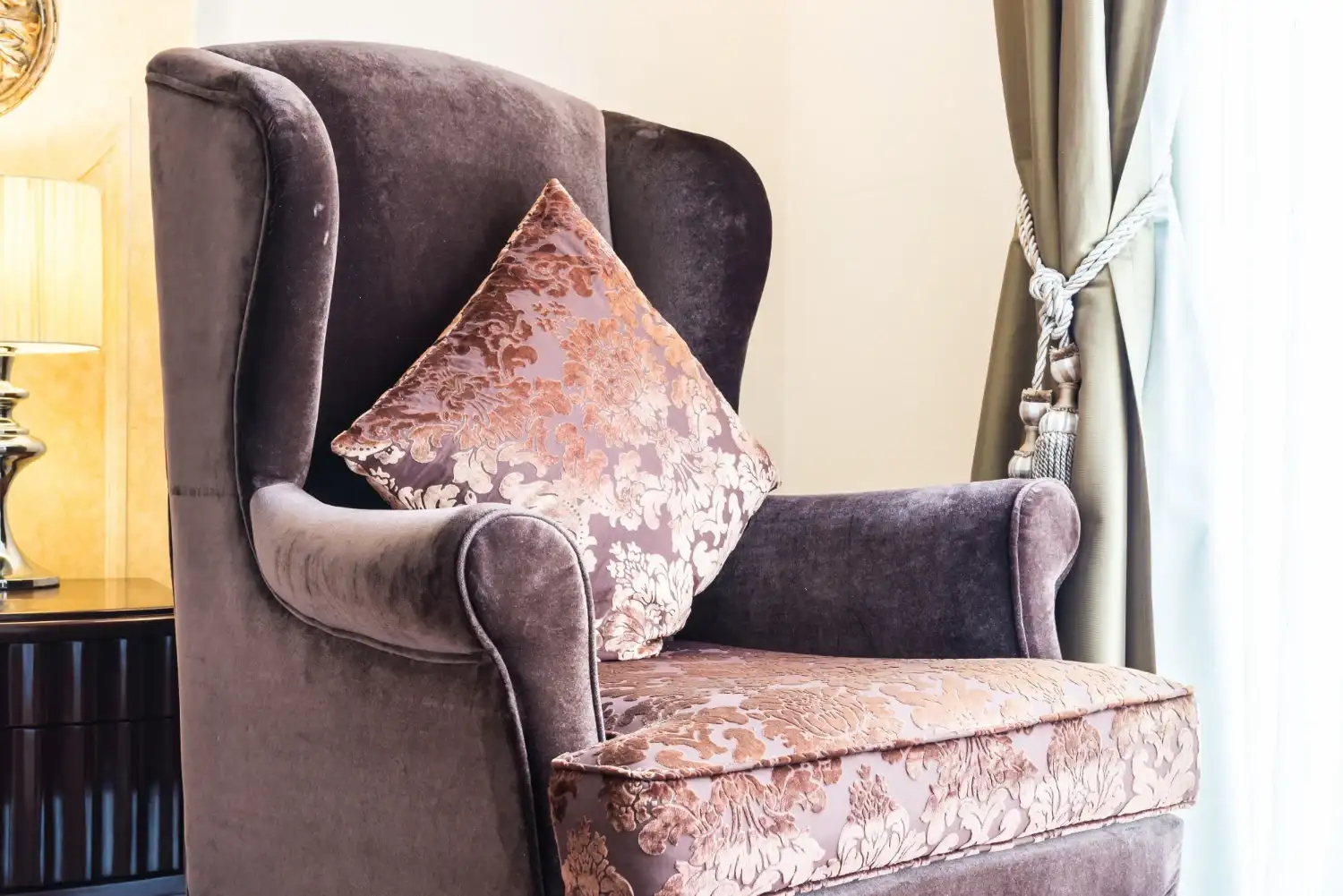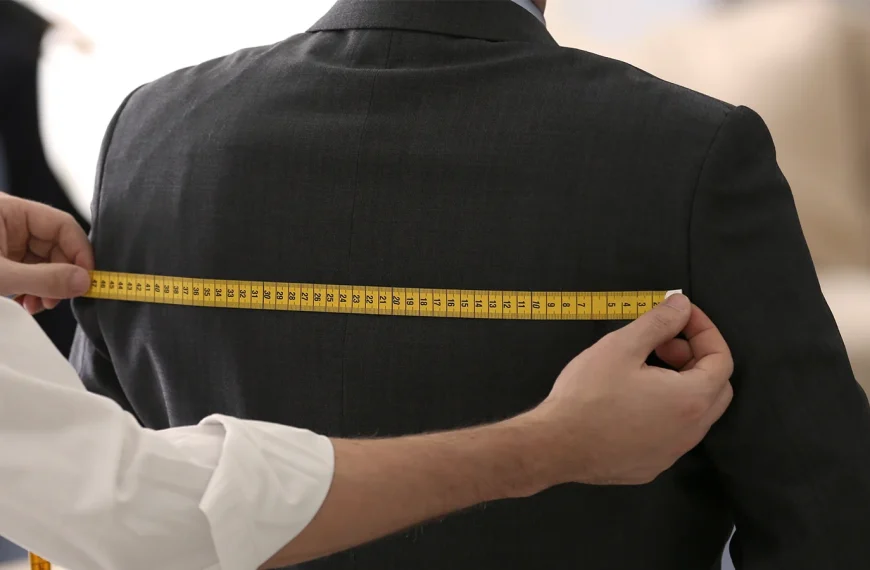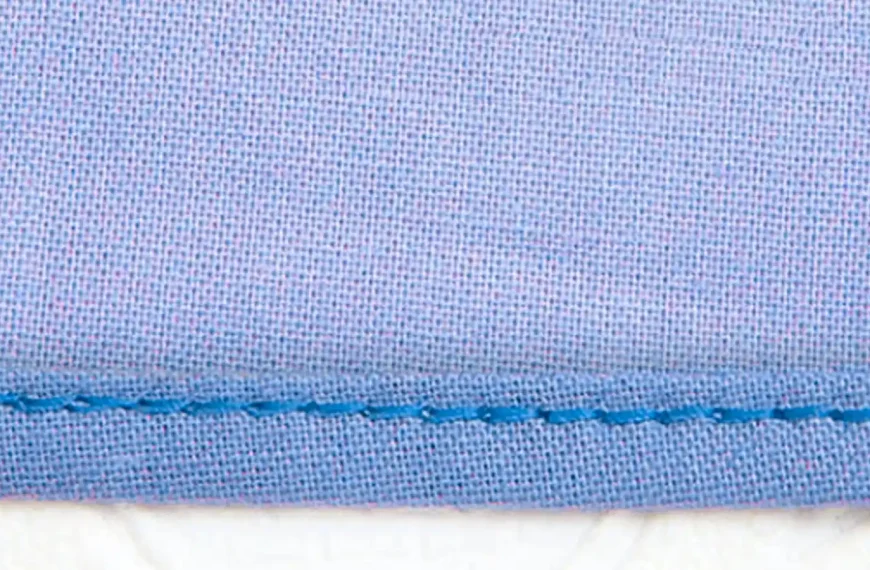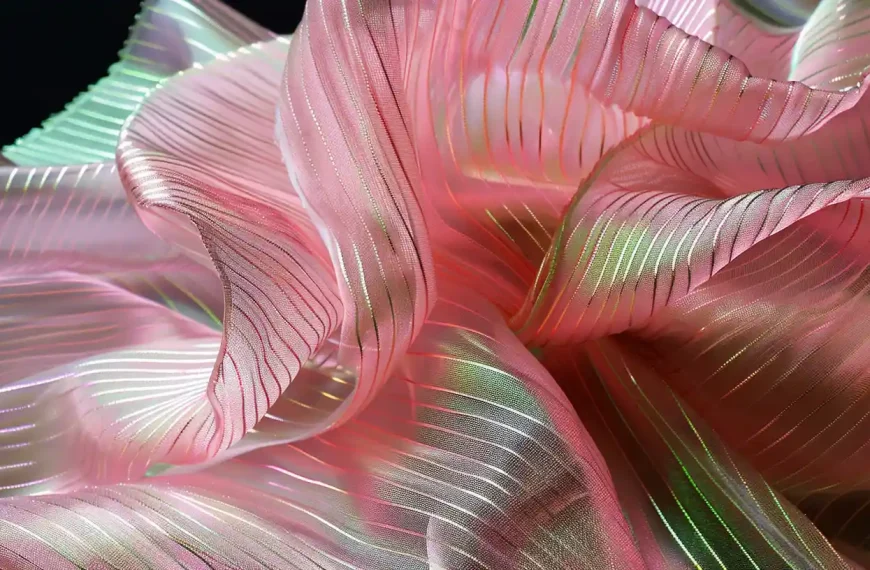Just as you’re about to tackle that dress with the enviable ruffled skirt, you realize that how to gather fabric is what you need to master next. You’ll find that this technique isn’t as daunting as it seems. However, there are nuances to consider when choosing the best method for your project.
Whether you’re working with delicate chiffon or sturdy denim, the right approach can mean the difference between haphazard puckers and professional pleats. You have your tools at hand—a sewing machine, thread, and sheer determination—but it’s the knowledge of when and how to use them that will make all the difference.
Stick with me, and you’ll soon turn straight seams into the talk of your sewing circle, with everyone eager to learn your secret.
Key Takeaways
- Choose the appropriate gathering technique based on the fabric’s weight and delicacy.
- Adjust the stitch length and tension settings on the sewing machine for optimal gathering results.
- Use specialized presser feet, such as a gathering foot or ruffler presser foot, for easier and more precise gathering.
- Distribute the gathers evenly for a polished and professional look.
Different Gathering Techniques for Different Fabrics
When working with lightweight fabrics such as chiffon, you’ll need a gentle touch. Too much tension can tear these delicate materials.
For medium-weight fabrics, you can use a standard sewing machine setting. But when you’re dealing with heavier textiles like denim, it’s best to use a sturdier technique, such as a zig-zag stitch over a cord.
Lightweight Fabrics
To ensure your lightweight fabrics like chiffon and organza are gathered without damage, you should choose the right technique tailored to the fabric’s delicacy. When you gather lightweight fabric, consider these important points:
- Set your sewing machine to a longer basting stitch length. This helps create even gathers without putting too much tension on the fabric.
- Use a zigzag stitch over a cord or dental floss, pulling gently to gather. This method reduces the risk of breaking delicate threads in the fabric.
- Handle the fabric gently. Avoid pulling or tugging too hard to prevent puckering and ensure smooth gathers.
Medium-Weight Fabrics
While lightweight fabrics need a delicate touch, gathering medium-weight materials such as cotton or linen calls for slightly sturdier techniques to achieve the desired fullness. You’ll want to use a sewing technique that accommodates the fabric’s strength.
For medium-weight fabrics, consider adjusting your stitch length to a longer setting on your sewing machine. This helps create fuller gathers.
Use a presser foot specifically designed for gathering or a gathering foot, to evenly distribute the fullness as you sew. For even more control over the gathers, try the zig-zag over-cord method. This involves sewing a zig-zag stitch over a cord and then pulling the cord to gather the fabric.
Remember to experiment with tension and stitch length until you find the perfect setting for your specific medium-weight fabric.
Heavier Fabrics
Gathering heavier fabrics, such as denim or upholstery material, requires sturdy techniques and stronger materials to achieve even and durable ruffles. When you start, it’s essential to use a long stitch length to create rows of basting stitches. This lets you easily pull and adjust the gathers without breaking the thread.
Here are some tips to keep in mind:
- Use a serger with a gathering foot for efficient and clean finishes.
- Double your rows of basting stitches for extra strength and control.
- When adjusting the gathers, do so gently to distribute fullness evenly.
Tulle
After mastering the techniques for heavier fabrics, you’ll find that gathering the delicate tulle requires a lighter touch and careful adjustments to your machine’s settings.
To create the gathers, select a long stitch length to sew two parallel rows of gathering stitches, also known as basting stitches, near the edge of your tulle. This prevents tearing while you sew gathers into this fine netting.
Once your lines are in place, gently pull on the bobbin threads to cinch the fabric, creating soft, even gathers. Mind the tension on your sewing machine. It shouldn’t be too tight, as tulle is quite fragile.
Stretch Fabrics
When working with stretch fabrics, you’ll need to use specific gathering techniques to accommodate their elasticity and maintain an even distribution of gathers. This is an essential sewing technique for your sewing projects that involve materials like jersey, spandex, or other stretchy textiles.
Here are some tips to ensure your gathers turn out perfectly:
- Use a longer stitch length to sew two parallel rows of gathering stitches. This helps prevent the fabric from snapping back and losing the gathered effect.
- A zig-zag stitch over a cord or elastic can also be effective, especially for heavier stretch fabrics.
- If using a sewing machine, consider a walking or gathering foot to help feed the stretch fabric evenly as you gather.
Remember to test your chosen method on a scrap of fabric first to achieve the best results.
8 Sewing Techniques for How to Gather Fabric
When you’re ready to gather fabric, you’ll find that basting stitches are your go-to technique. For a standard gather, sew two parallel rows of basting stitches. For a stronger, more secure gather, add a third row.
If you’re looking for an alternative, try zigzagging over a cord or using elastic to achieve the desired fullness.
1. Use Rows of Basting Stitches: Two Threads
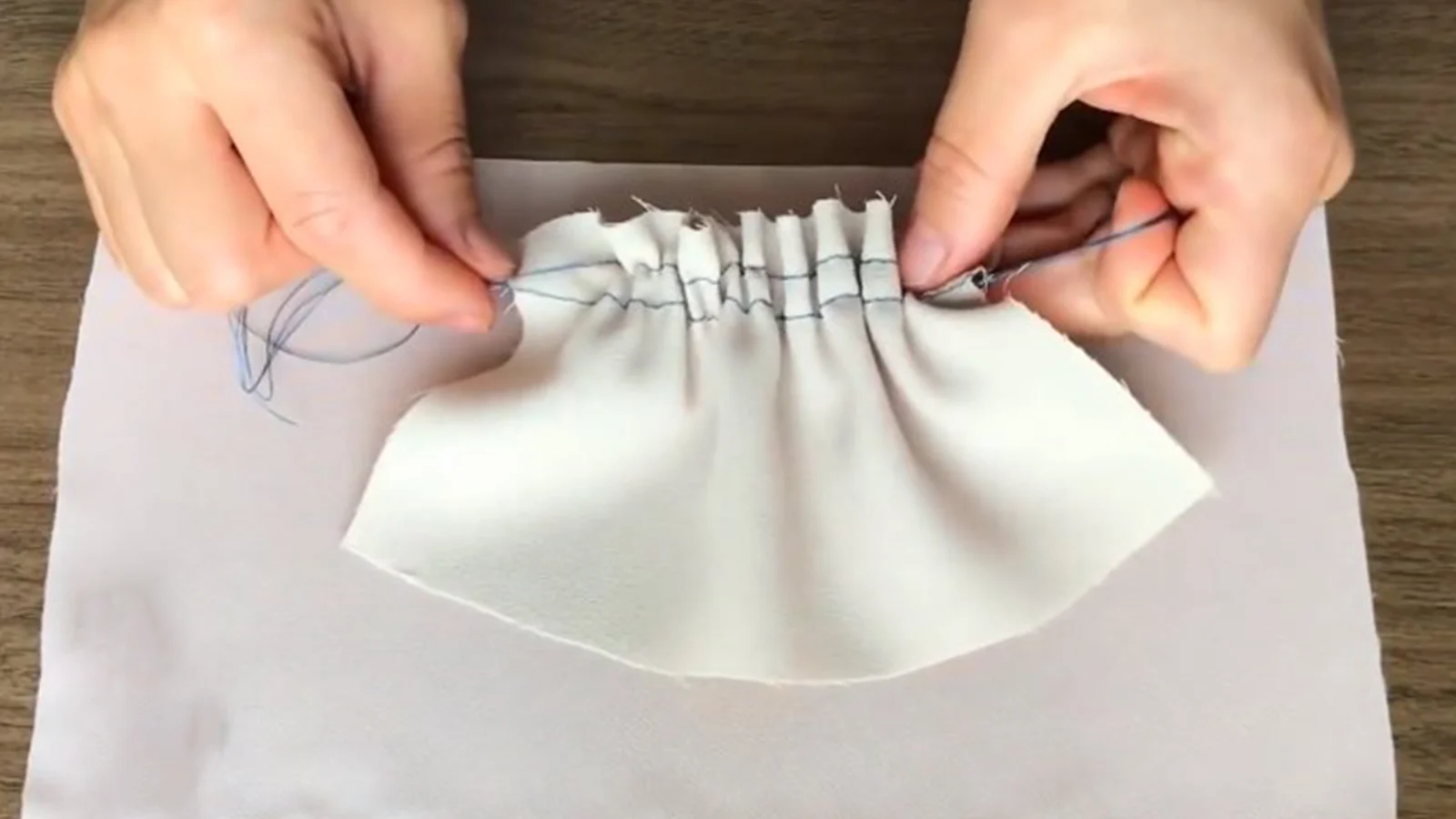
To create precise and even gathers in your piece of fabric, you’ll begin by sewing two parallel lines of basting stitches, using a longer stitch length for easy adjustment. Ensure your stitch lines are within or just outside the seam allowance. Leave long thread tails at both ends; you’ll need these for pulling.
- Sew the first row of stitching about 1/8 to 1/4 inch from the fabric edge.
- Place the second row parallel to the first, about 1/4 to 1/2 inch apart from it.
- Don’t backstitch at the beginning or end. This allows you to pull the threads freely.
Carefully gather the fabric by pulling the bobbin threads from both ends. Distribute the gathers evenly by sliding the fabric along the threads.
2. Use Rows of Basting Stitches: Three Threads
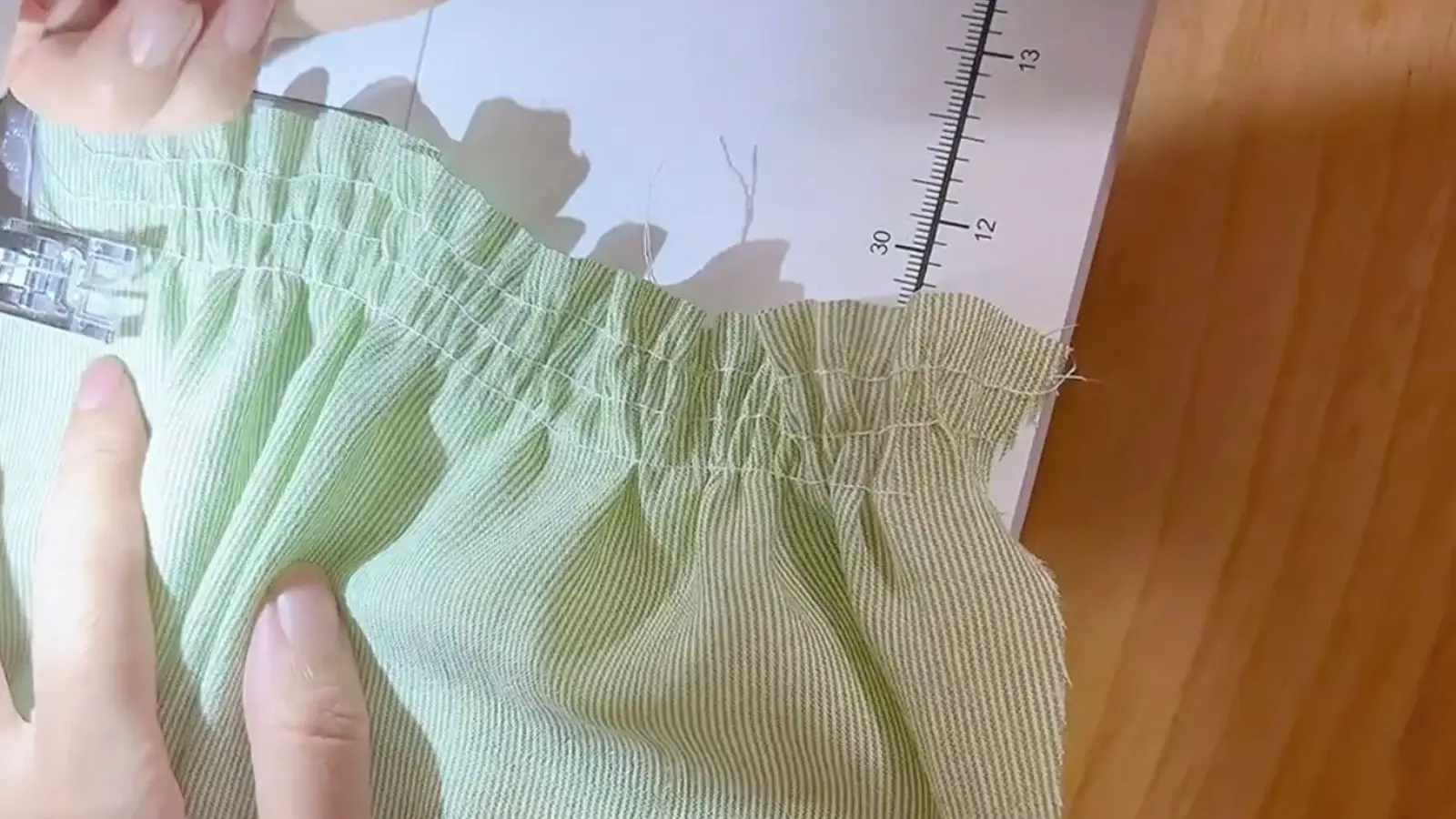
For enhanced control and fine gathers, sew three parallel rows of basting stitches across your fabric. Place them strategically within and outside the seam allowance.
To create a beautiful gathered ruffle, start by setting your machine to a long stitch length. This is key for gathering using this technique. Stitch the first row just inside the seam allowance, the second directly on it, and the third about 1/8 inch outside the seam allowance.
When you’re done, gently pull the bobbin threads to create even gathers. Be sure to distribute the fullness evenly for a polished look.
If needed, the third row of basting stitches can be easily removed after you’ve secured your gathers. This triple-thread method gives you the precise control necessary to achieve professional-looking results.
3. Use Zigzag Stitches over a Cord

Utilizing zigzag stitches over a cord, you can achieve sturdy and even gathers. This is particularly effective for managing heavier fabrics like denim. When you use this method, you’ll need to:
- Adjust your sewing machine to create wide zigzag stitches that can encase your chosen piece of yarn or cord.
- Lay the cord parallel to the edge of the fabric. Then, sew over it without catching the cord in the stitches.
- Once complete, secure both ends of the yarn to prevent it from sliding out as you pull to create gathers and ruffles.
4. Gather Fabric with Elastic
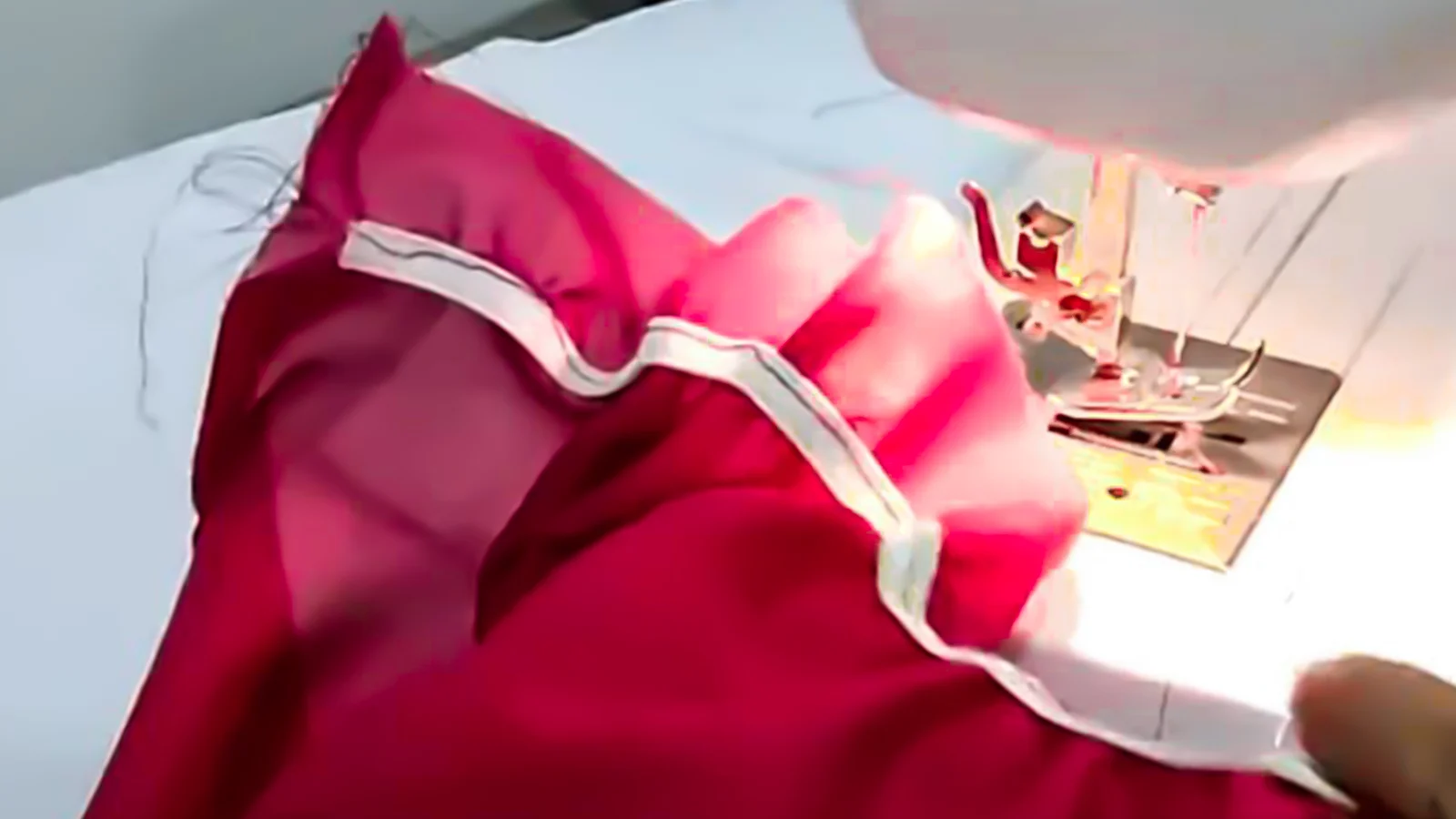
Begin by laying a piece of elastic along the wrong side of your fabric edge. You should ensure it aligns with the area you wish to gather. Set your sewing machine to the longest stitch length and sew close to the edge of the elastic. Stretch it slightly as you go to ensure it fits within the seam allowance. Be careful not to catch the elastic in your stitches.
Once you’ve stitched along the entire length of the elastic, the fabric will naturally form gathers. Adjust the gathers evenly across the elastic to create a uniform look for your gathered piece.
Secure the ends of the elastic to hold the gathers in place, either by tying or stitching them. Trim any excess elastic, and your gathered fabric is ready for the next step in your project.
5. Gather Fabric by Hand
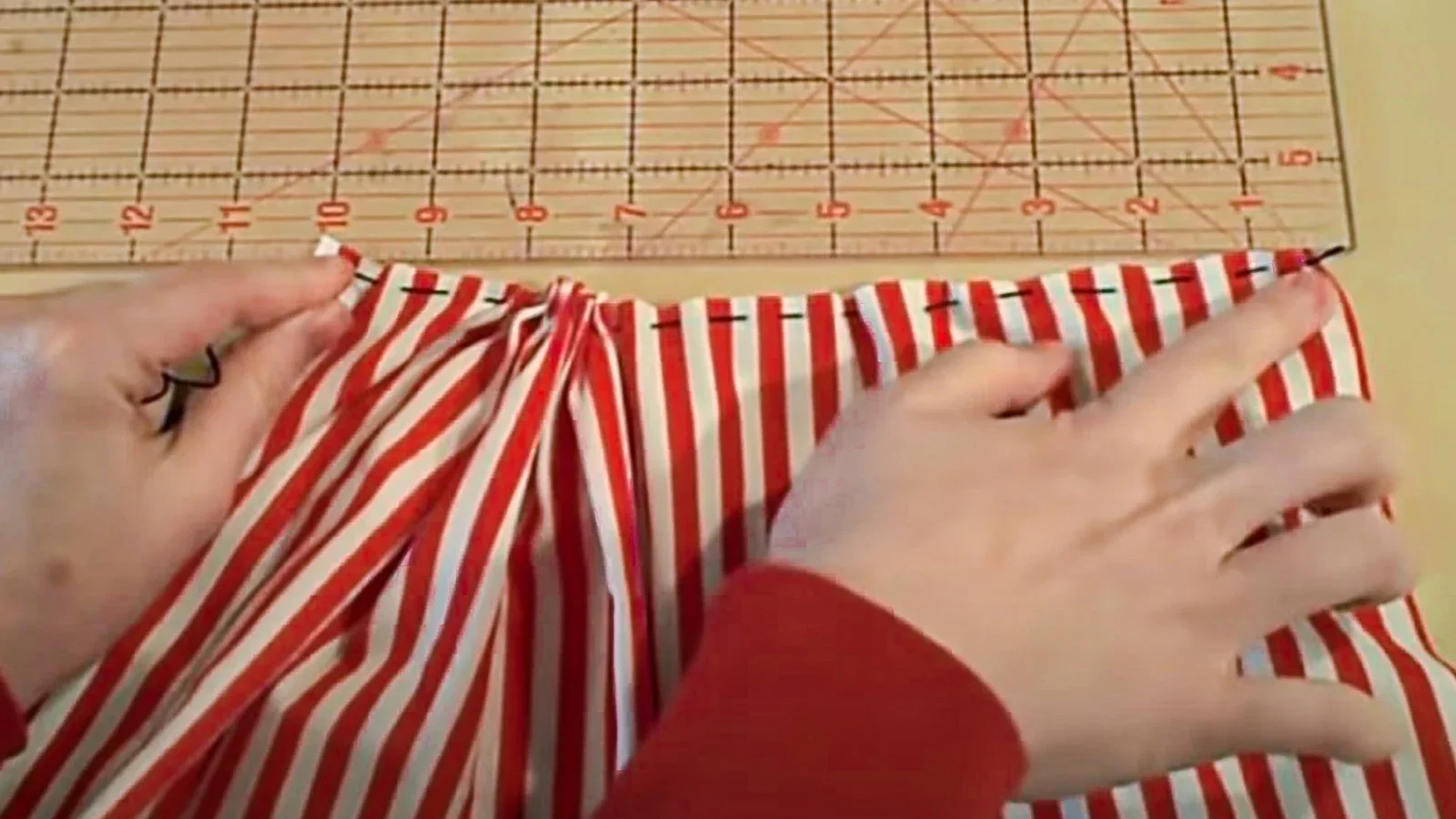
While machine gathering with elastic offers a quick approach, hand gathering allows for a meticulous touch when creating ruffles or pleats, especially on fabrics that need delicate handling.
To gather fabric by hand, you’ll want to master the running stitch. It’s a fundamental hand sewing technique. Here’s how to do it:
- Thread your needle and tie a knot at the end of your thread tail.
- Sew two parallel rows of running stitches along the intended gather line.
- Gently pull the fabric along the thread to create gathers. Distribute them evenly for a polished look.
6. Gather Fabric with a Serger
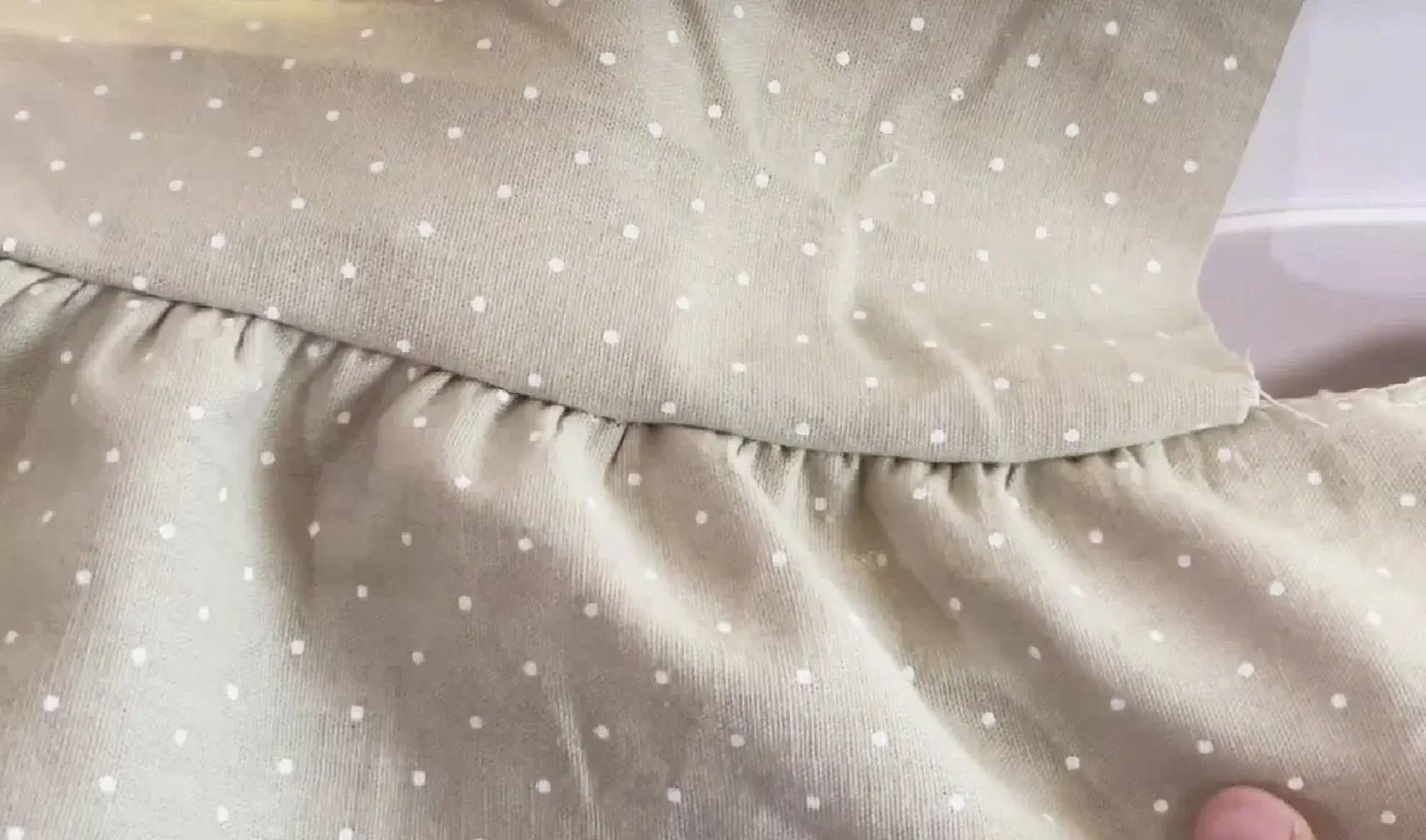
To gather fabric using a serger, set your stitch length to a long setting. It’s usually between 3 and 4 to create full even gathers.
Start by sewing one straight line on the fabric’s raw edge, about 1/8 inch from the edge, with your serger. Then, sew a second line, 1/8 inch inside the first. This creates a strong base for gathering a long length of fabric. It’s like sewing three lines of basting stitches with a regular sewing machine.
Hold the top threads with your right hand and pull the fabric toward you with your left to gather. Once you’ve achieved the desired fullness, tie the thread ends securely.
Adjust the gathers evenly to ensure a professional finish.
7. Gather Fabric with a Ruffler Presser Foot
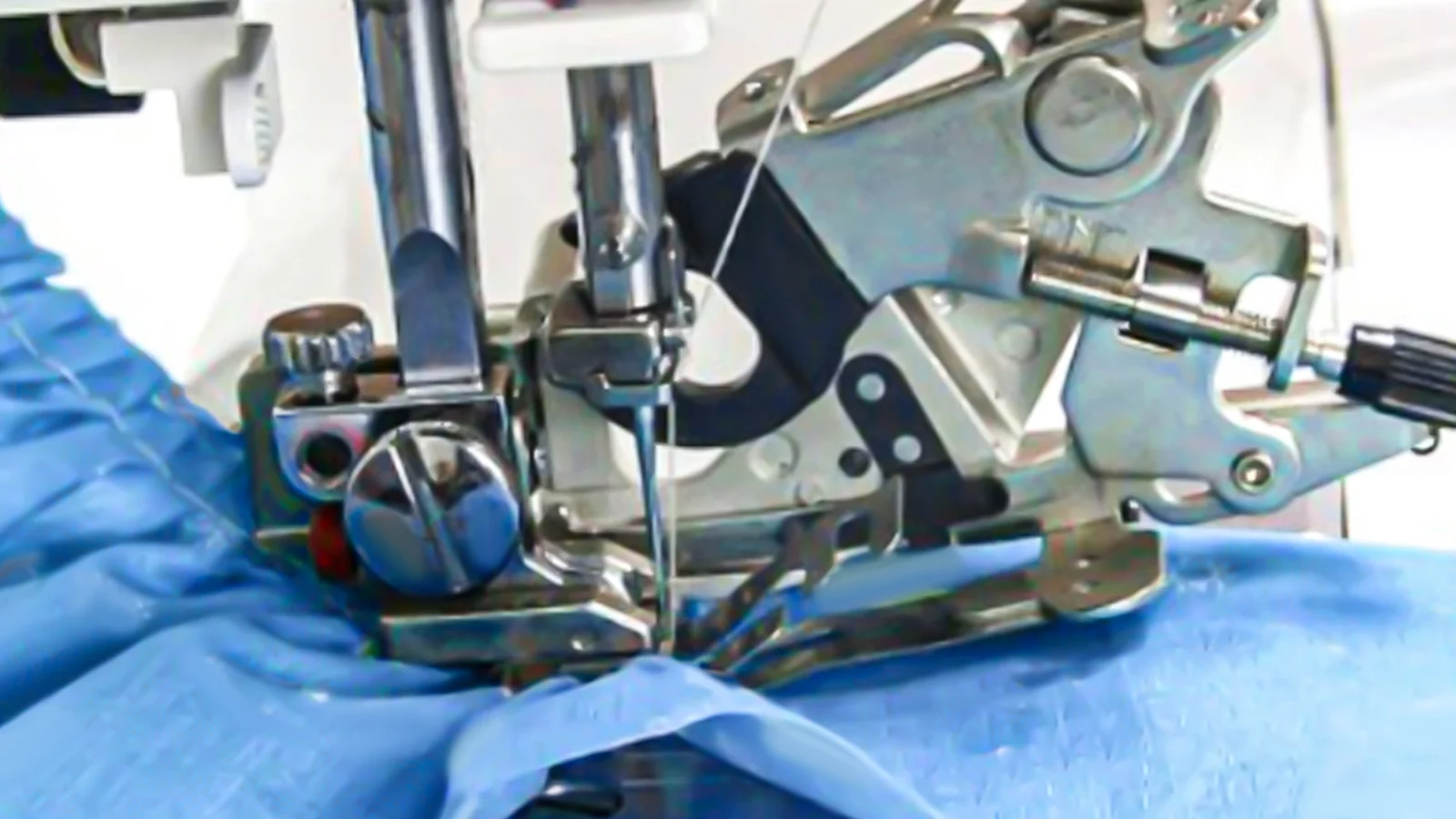
If you aim for quick and uniform gathers, consider attaching a ruffler presser foot to your sewing machine. It’s a tool designed to simplify and expedite the gathering process. The ruffler foot creates precise ruffles. It’s especially useful when working on large sewing patterns that need a lot of fabric to be gathered.
Here are a few steps to follow:
- Adjust the Ruffler: Set the depth and frequency of gathers according to your project needs.
- Secure the Fabric: Make sure your fabric is evenly fed into the ruffler to avoid uneven gathers.
- Monitor the Bobbin Thread: Keep an eye on the bobbin thread to ensure it doesn’t run out mid-gathering.
As you sew, the ruffler presser foot will neatly tuck and gather the fabric, pushing the gathers towards the back to create even ruffles.
8. Gather Fabric with a Gathering Foot
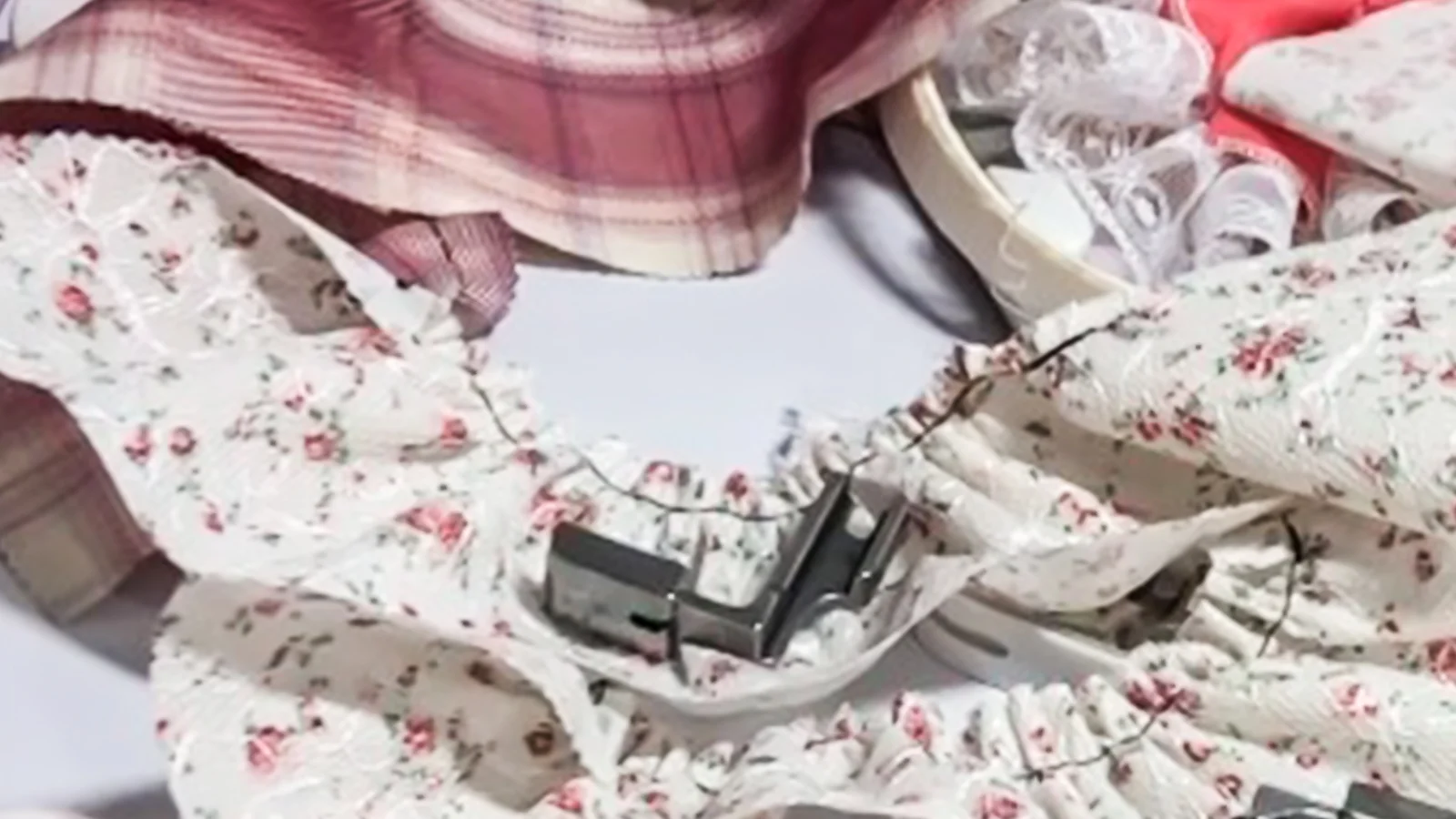
Utilizing a gathering foot on your sewing machine often simplifies the process of creating even, consistent gathers in fabric.
Begin by attaching the gathering foot to your machine, ensuring it’s secure. To prepare, increase the stitch length on your machine, as a longer stitch will facilitate gathering.
Then, sew the first line of basting stitches straight down the fabric where you want the gathers to form. Be careful not to backstitch at the beginning or end, as this will prevent the gathers from coming together smoothly.
As you sew, the foot will automatically create gathers in the fabric. Adjust the tension if necessary to control the fullness of the gathers.
Remember to gently guide the fabric, letting the foot do the bulk of the work for you.
Tips for Gathering Fabrics
When gathering fabric, there are a few key steps to follow to achieve even and consistent ruffles.
First, ensure you select the appropriate thread tension and stitch length for your material. This will help prevent any puckering or uneven gathers.
Before gathering begins, it’s crucial to leave long tails of thread at both ends of your fabric. These tails will be used later on to adjust the gathers to your desired fullness.
To start gathering, sew the first line of basting stitches approximately 1/8 inch from the fabric edge. It’s important not to backstitch at the beginning or end of this line. Leaving long tails of thread after sewing is crucial. They will be necessary for pulling and adjusting the gathers later on.
For added strength and even distribution of gathers, especially on heavier fabrics, consider adding a second parallel line about 1/4 inch apart from the first.
Once the basting stitches are in place, gently pull on the long tails to gather the fabric to your desired fullness. Take care not to pull too tightly, as this can cause the fabric to gather unevenly or even tear.
To secure the gathers before attaching the gathered fabric to your project, tie off the threads at one end. This will help ensure that the gathers stay in place and maintain their desired fullness.
Remember to experiment with different gathering techniques to find the most suitable method for your fabric type and project. By following these steps and taking a methodical approach, you can achieve a professional finish for your gathered fabric.
Conclusion
You’ve now mastered the art of gathering fabric, armed with eight techniques to add ruffles and volume to your projects. Whether you use a machine or hand stitch, remember to evenly distribute your gathers and secure them in place.
With practice, your sewn creations will boast professional, elegant gathers. So, go ahead, choose the method that suits your fabric and project best, and watch as flat sheets transform into beautifully textured designs.
Happy sewing!
Learn more sewing tips on Longan Craft Blog! Dive into the fabric world with Longancraft!

